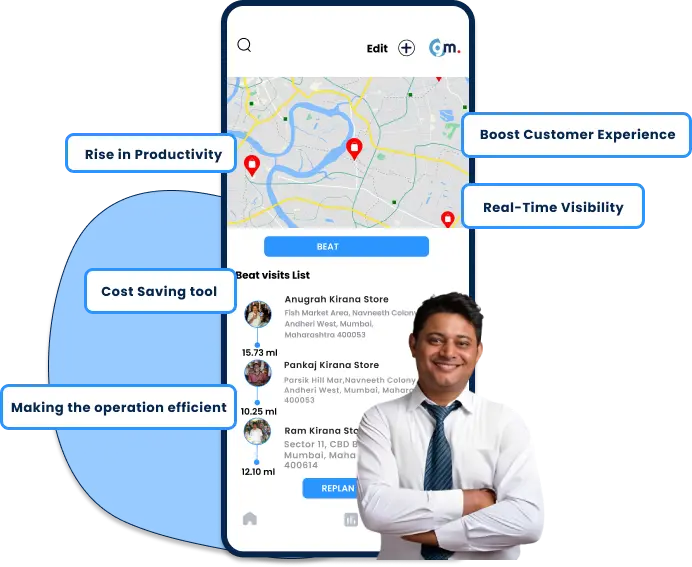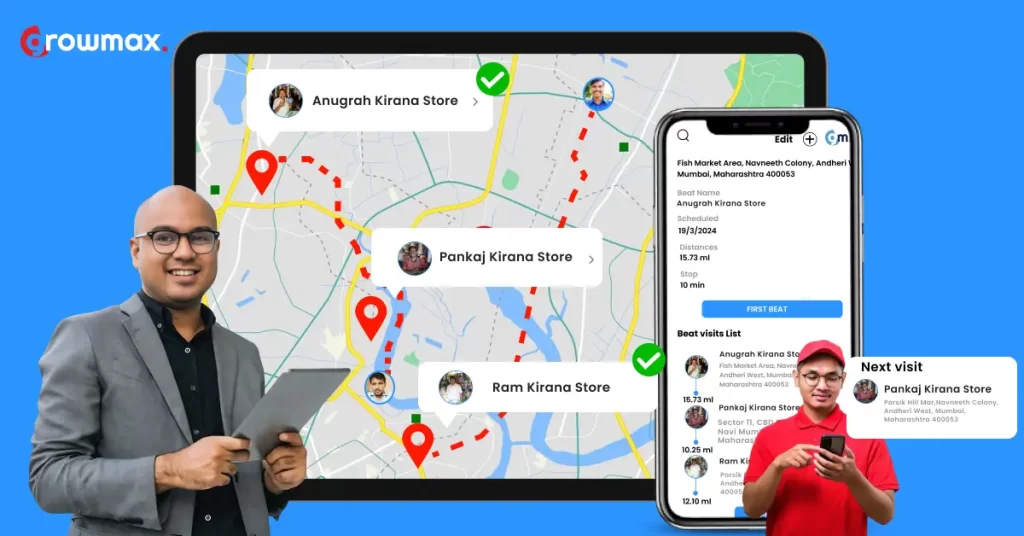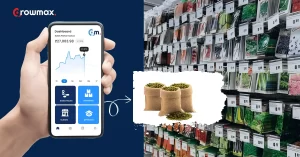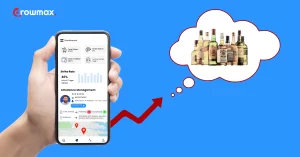Only 30 percent of salespeople achieve their targets, while 70 percent fail! This statement has probably made you conclude that ‘it’s because of lack of skill’. But not really!
It’s unfair to expect results/productivity from sales executives if they are not provided with the proper resources to perform their tasks.
FMCG brands must focus on cutting down unnecessary or manual tasks to save the waste of time and effort of their field executives.
In this blog, I’m going to point out how Optimized-beat management provides significant benefits over manual planning.
Some of the challenges field sales reps are confronted with
- Issues while planning beat plans owing to the incomplete and incorrect address of outlets
- Lack of geographical understanding and traffic bottlenecks, which lead to time and energy loss.
- Fail to visit the assigned number of outlets (as their travel time goes into doing needless things)
- Poor communication between the retailer and field officials, as officials fail to adhere to deadlines
- Unable to predict the specific number of sales reps and vehicles needed to cover each territory
What is Beat Management?

In layman’s, It is a process of planning, optimizing, and monitoring the journey/routes of salespeople, delivery drivers, and other professionals, to market.
Beat planning is an initial part of beat management, also called PJP (permanent journey plan) a day-level route plan made for field sales personnel to visit several outlets at a predefined frequency.
Moreover, with effective beat planning productivity of field sales reps gets improved, but beat optimization helps in achieving higher sales at a lower cost.
Beat management data-driven tools assist sales managers in understanding the time spent by their field sales reps in each store and make informed decisions accordingly.
Beat Planning (designing maps to market), Beat Management (following the map with some adjustments), and Beat Optimization (analyzing the map to suggest efficient and effective results
How is Beat Management helpful to FMCG/CPG brands?

I’m going to bring forth five major benefits of efficient beat planning, an important asset, to the fast-moving consumer goods (FMCG) brands
1. Rise in Productivity
Field sales representatives can significantly improve their performance by effectively planning their sales routes. This planning results in increased store visits, the ability to pitch to more customers, stronger relationships with distributors and retailers, and more. and retailers, and more.
Their focus gets directed only toward the firm’s goal to attain better results.
Productivity happens only when a right-field executive is chosen for the right retailer.
Effective beat planning helps in allocating resources, streamlining workflow, and making data-driven decisions, ultimately driving business growth.
2. Cost Saving tool
An effective beat plan decreases operational expenses by eliminating the need for manual searching of store addresses and reducing travel time.
Beat planning decides the most efficient routes to the market being free of traffic congestion, leading to less fuel consumption by 30 percent
An effective beat plan not only ensures cost reduction but also minimizes accidents with clear navigation and driver assistance features.
3. Making the operation efficient
A proper route plan ensures distributors can efficiently and effectively distribute products to retailers, resulting in timely order fulfillment.
Drivers can complete more deliveries and boost their productive time via the help of streamlined routes and get rid of wasted time
An effective operation secures business scalability, expands territories, and increases fleet size.
4. Real-time visibility
Data, like Effective sales visits, orders replenished, frequency of visits, and sales cycle time, assist the sales managers in predicting the sales potential of each store.
Managers get to know the entire sales journey of field sales reps to assess each one’s performance
Real-time monitoring of deliveries to customers.
Related : Ultimate Guide to Salesman Tracker Software 2024
5. Boost Customer Experience
A systematic beat plan can even identify problems at the store level regarding the number of sales of products to customers.
It makes route planning a necessity for FMCG and CPG brands as it not only improves the productivity of field sales reps but also customer touchpoints.
What makes Beat Optimization different from Google Maps?
Scenarios where Google map is not an alternative to route optimization:
- It (GM) gets inefficient when covering more than 5 stops on a route though it doesn’t provide the most optimal one
Therefore, route optimization identifies the most optimal sequence and cuts the cost
- It is not capable of planning the required number of drivers with specific skill sets to fulfill deliveries
Though route optimization does have the capability to plan delivery including last-mile delivery
- Google Maps is not as efficient in helping businesses minimize vehicular time on the road, freeing up resources for other activities, optimizing available work hours, and so on, as route optimization.
- If there is a need to re-route owing to a sudden traffic jam, done manually in Google Maps
Real-time tracking, dynamic analysis, and predictive alerts are possible in route optimization
What if FMCG brands don’t take beat planning seriously

Some major consequences if brands don’t enhance their approach and stick to the traditional way to route to market:
- FMCG brands don’t want to mess with their sales numbers as not onboarding beat planning tools leads to less number of orders from retailers, eventually hampering revenue
- Every brand wants its image to be strong in the market to make its customers perceive and trust it profoundly. However, not delivering the orders on time due to any reason will quickly hamper that brand equity.
- Most importantly, brands, be it FMCG or CPG, have the desire to get ahead of their competitors to remain relevant in the market, but it is unlikely to happen if they aren’t evolving as per the market needs.
Therefore, FMCG brands have to have beat planning to get a competitive advantage.
- Brands very well understand the significance of making informed decisions in their business, as one wrong move will turn around everything, and the use of old traditional methods to manage operations is nothing “but shooting one’s foot” in today’s market
- Last but not least, FMCG and CPG brands will not get efficient and productive outcomes if they cannot manage their beats with the utmost proficiency.
Conclusion
Sales managers create beat plans for field sales reps manually in traditional trade sales.
It has limited pros, but many cons like planning manually can be tedious and prone to mistakes for complex routes, lack of accurate data, and ineffectiveness, which eventually makes brands lose ample business opportunities
Moreover, in modern trade, brands use optimized beat planning to get rid of such hurdles that businesses, in the general trade, are yet dealing with.
Like cutting down travel time, improving productivity, cost reduction, on-time deliveries, strong customer experience, and strong brand reputation. All these can be achieved by simply optimizing beat planning.




